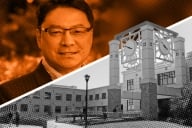You have /5 articles left.
Sign up for a free account or log in.
A recent study of 3,769 undergraduate science instructors found that certain factors predicted their use of active learning strategies. Researchers found that instructors of larger classes, with 100 students or more, do significantly more lecturing than those with smaller classes. Traditional, fixed-seat classrooms appear to similarly hinder active learning. There is more active learning where assessment of teaching effectiveness is valued but where student evaluations of teaching are not a primary metric of that effectiveness.
Surprisingly, to the researchers, security of employment does not correlate with less active learning, as instructors in both precarious and more secure teaching jobs used active learning at similar levels. Instructors with very high research productivity report using active learning less than other instructors. But instructors who engage in education research or funded curriculum development use more active learning.
Demonstrating the power of experience, instructors who were once students in an active learning classroom or who were part of an instructional team that used active learning were more likely to use active learning in their own classrooms. “Institutions trying to increase the use of active learning in undergraduate STEM education should continue to make targeted structural changes such as maintaining and seeking smaller class sizes, building and supporting active learning classrooms, and emphasizing methods beyond SET scores for the evaluation of teaching effectiveness,” says the study, published in PLOS ONE. Authors are Naneh Apkarian, Charles Henderson, Marilyne Stains, Jeffrey Raker, Estrella Johnson and Melissa Dancy.
“These findings also affirm the importance of professional development opportunities, both local and national,” the study says. “Instructors are more likely to implement active learning if they do not have to figure out everything on their own.”









